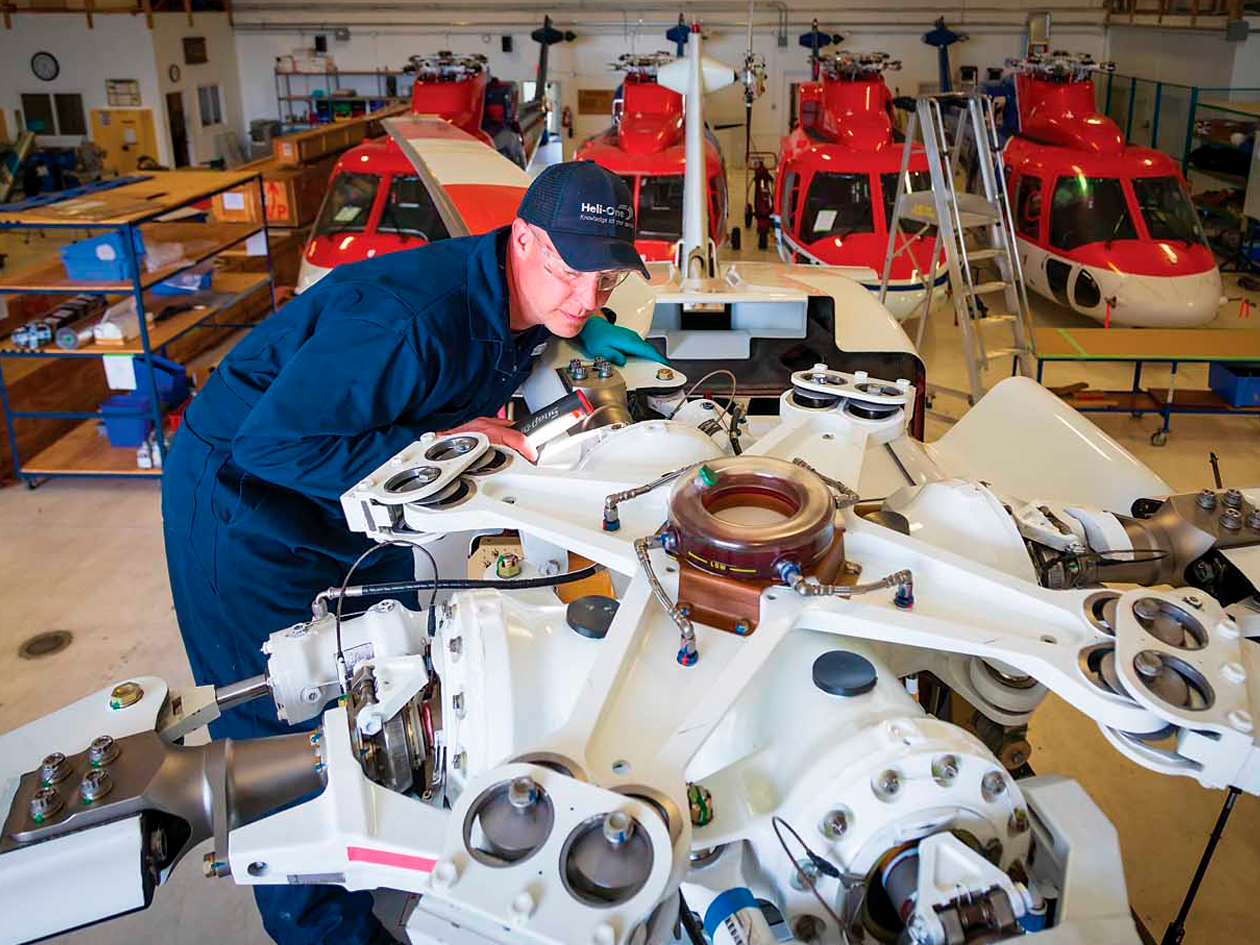
Founded in 2004 as an offshoot of CHC Helicopter, the fortunes of maintenance, repair and overhaul (MRO) provider Heli-One have largely been tied to those of its parent company. With an enormous range of capabilities, from aircraft storage to component maintenance, and engine overhaul to the modernization or modification of an entire aircraft, Heli-One found a steady flow of work in its early years through its roots in the offshore oil-and-gas industry. While it operated as a distinct entity from CHC, providing services for a range of third party operators, the vast majority of its work was tied to its parent company.
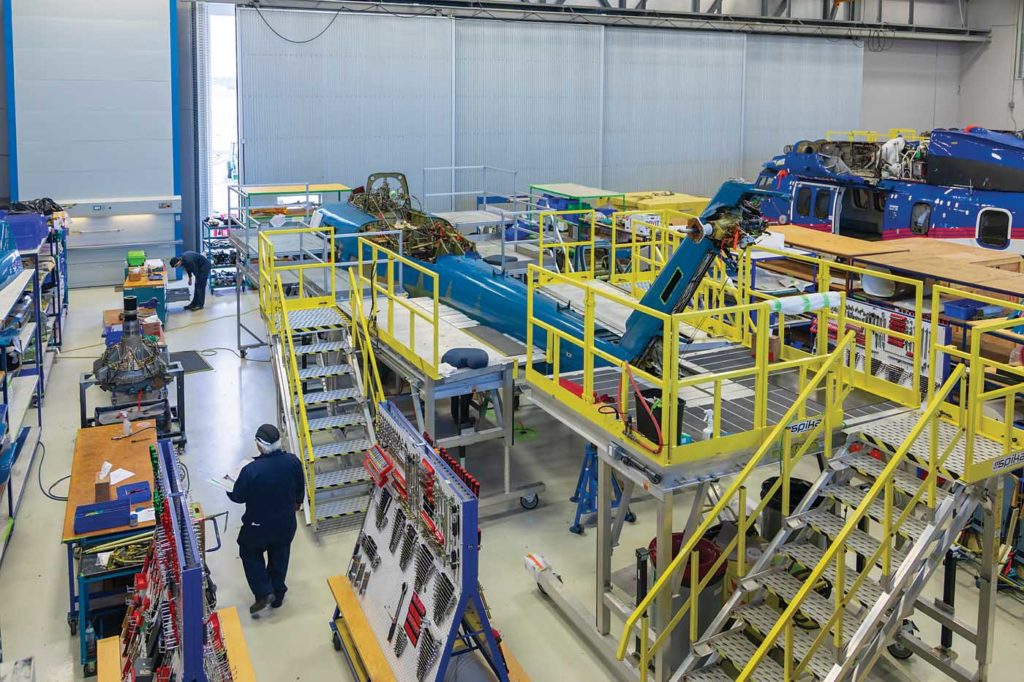
Advertisement
And then came the historic downturn in the offshore market, closely followed by CHC filing for Chapter 11 bankruptcy protection in May 2016 as the company began a 10-month reorganization process. A new CHC emerged, and along with it was an evolving Heli-One.
The oil-and-gas market continues to provide challenges for those traditionally reliant on it (offshore operators PHI and Bristow have subsequently begun their own Chapter 11 processes), but Heli-One has adapted to the changing climate well, developing a growing niche in the modification of Airbus H225s from offshore configurations. This, along with a growing body of work in support of military and government fleets, and robust performance in Heli-One’s existing MRO operations, has meant that much of the company’s capacity for the next 12 months is already accounted for.
“If you went back a year/year-and-a-half ago, we laid people off, we had a downturn, and now we’ve seen it really pick up again to the point where we’re actually constrained in the amount we can take on,” Eddie Lane, the company’s president, told Vertical. “So, across the board we are hiring people.”

When Heli-One was established as a separate business unit in 2004, its specialty was in Sikorsky airframes (the S-61, S-76, and S-92). It established a component shop and purchased an engine shop for those types the following year. In 2010, the company signed its first AW139 and H225 support contracts. Subsequent landmarks included the signing of a 13-year contract with the U.K. Ministry of Defence for Makila engine support in 2012, Heli-One Norway becoming an approved Flight Test Organization in 2015, and Heli-One Poland winning a Royal Netherlands Air Force AS532 Cougar on-base support contract in 2018.
“One of the key things about the business has been being able to leverage the experience that we obtained as a repair facility for CHC, and then expand that out and utilize what we have, in terms of people and capacity, to really add value,” said Lane. “On the supply-chain side of things — inventory, you could really service the bigger [offshore] fleet with relatively less investment and inventory. So it kind of builds economy of scale, which is one of the benefits that we have had over the years.”
According to Lane, the biggest impact on Heli-One of CHC’s bankruptcy process was mainly on the administrative side of the business.
“From a customer point of view, just like with CHC, there wasn’t a major impact in terms of losing any major work,” said Lane. “Through it all, we didn’t actually lose any customers because of [the] Chapter 11 [process]. We lost work because of the market changes and reduction in flying hours.”
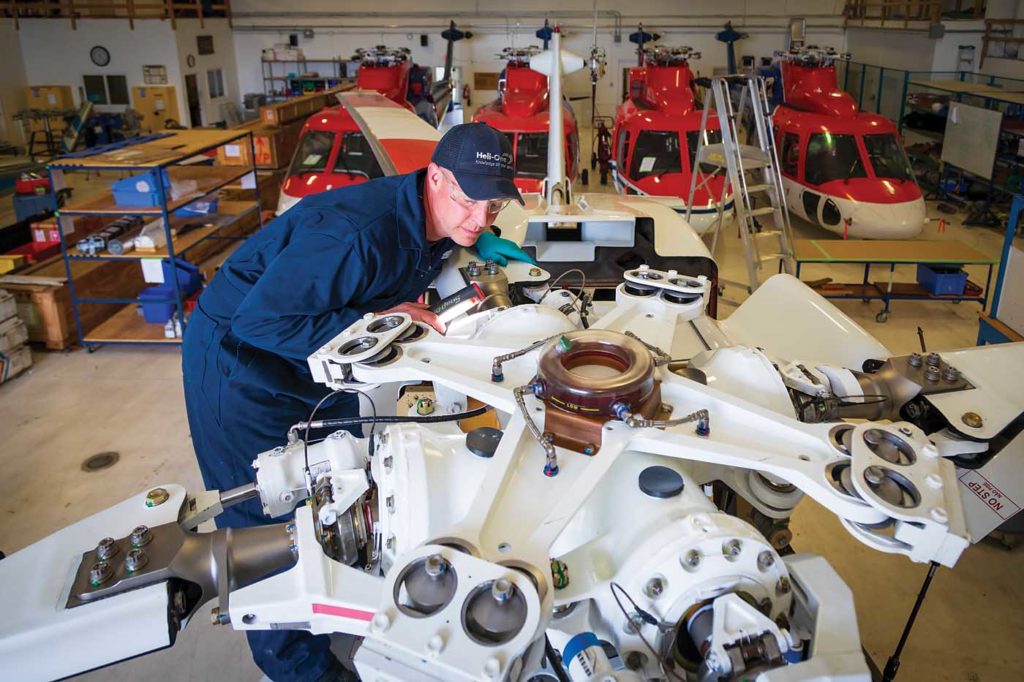
Today, Heli-One’s customers come in all shapes and sizes, from operators with one or two aircraft to the major offshore operators and various militaries.
And where just 25 percent of Heli-One’s business was once from external (non-CHC) customers, the balance has swung dramatically in the opposite direction. Seventy-five percent of the company’s business is now from other sources.
“We are very much externally focused now,” Carolyn Forsyth, general manager of sales and marketing, told Vertical. “Our biggest customers are really on the governmental and military side. That’s a big switch for us. The oil-and-gas market always has an impact on the helicopter market, and some of that is just going to be natural ups and downs over the years. But some of it is more structural for us — it’s part of a longer term strategic move to grow in other industries, in other sectors.”
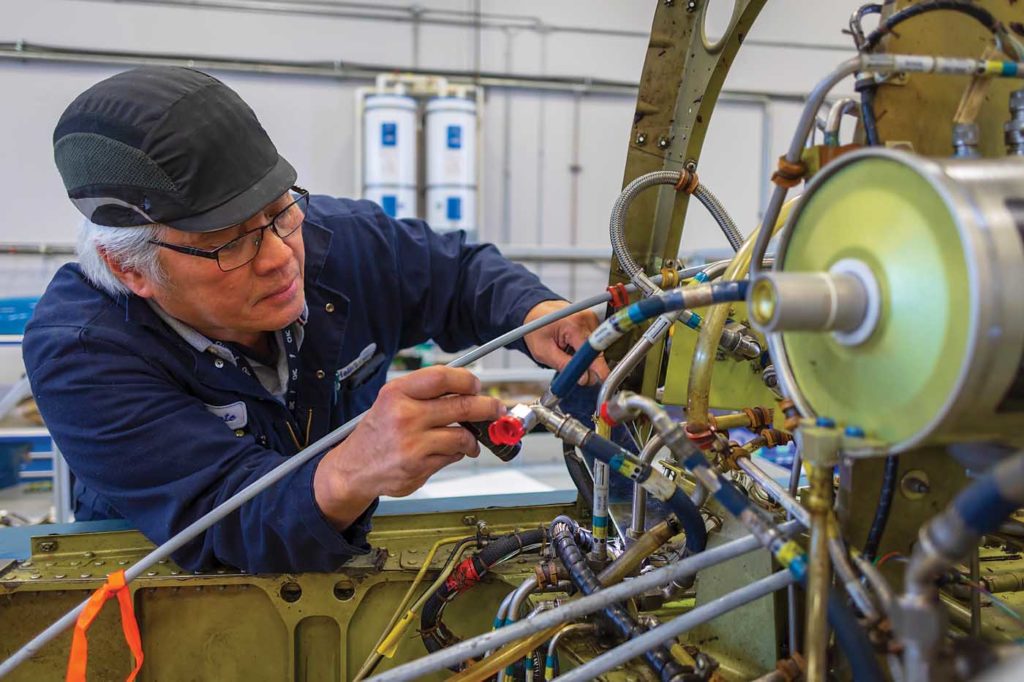
A broad reach
Heli-One’s footprint is spread across three sites in North America and Europe. Its headquarters is in Richmond, British Columbia; it has a large facility in Stavanger, Norway; and a third base in Rzeszow, Poland. Each has its own main area of focus.
The Stavanger site is the largest, with 360 staff, and various workshops, avionics, rescue equipment and rotor blade shops.
Much of the Stavanger facility’s work revolves around the Airbus H225 and AS332 Super Pumas. Whereas this would once have involved performing routine maintenance and modifications for the offshore fleet, it now means modifying those aircraft for life in another sector.
Following the fatal crash of a CHC-operated H225 off the coast of Norway in April 2016, the type was temporarily grounded by regulatory agencies around the world. While Airbus implemented a variety of safety measures in a service bulletin as part of the type’s return to service following the grounding, the H225 has struggled to find a role in an offshore fleet that has been streamlined by an ongoing industry downturn.

Just days after that fatal crash, CHC became the first of the major offshore operators to file for Chapter 11 bankruptcy protection. With the drop in demand for Super Pumas (particularly H225s) for offshore transport, operators have taken the opportunity to return those types to leasing companies as part of their restructuring efforts.
“A lot of [the H225s] were sent back to the lessors, and the lessors being the customers of Heli-One, they worked with us to get those aircraft back into service,” said Lane. “Prior to [CHC’s] Chapter 11, we serviced the 225s as an oil-and-gas aircraft, so we did a lot of work on all the components and giving modifications for the oil-and-gas fleets. Then, of course, [that work] went down to zero, effectively. But now we see a real peak in demand.”
Heli-One had also been offering storage services for idle aircraft during the oil-and-gas downturn. The modification process for the 225s therefore often involves bringing the aircraft out of storage, performing work mandated by an Airbus service bulletin to enable the type to safely return to service, and then upgrading them for their new role — whether that be heavy-lift operations or government services.
The company has quickly developed a reputation for completing these modifications, and is performing them for both existing and new customers. So far, it has helped more than 20 H225s return to service in new sectors, with many more conversions in the pipeline.
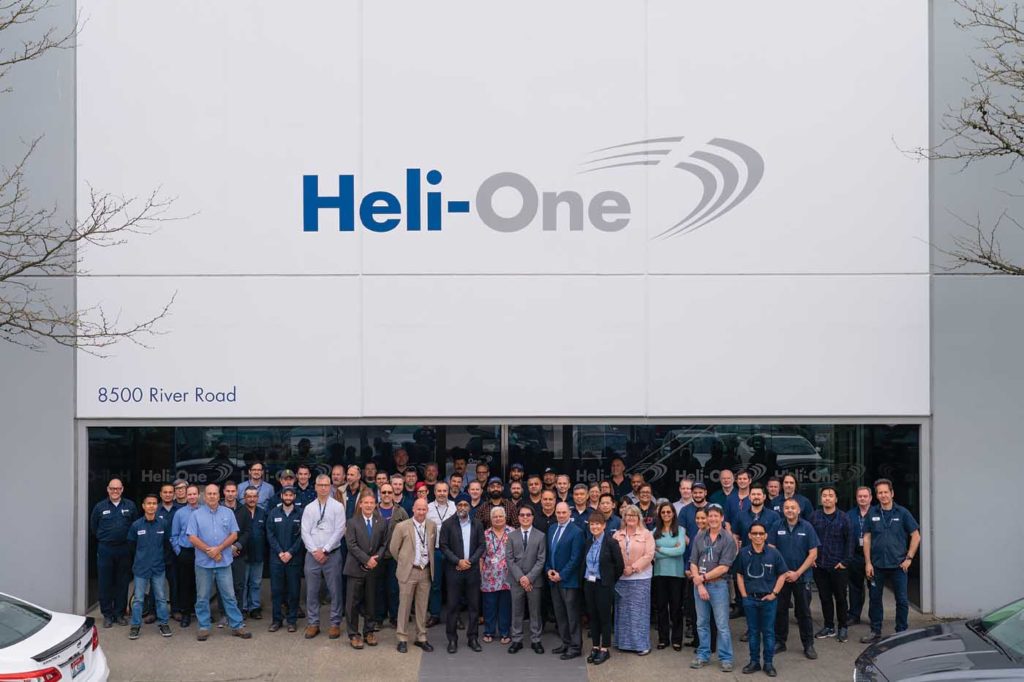
A recent contract saw former Bristow H225s, owned by Norwegian helicopter lessor Knut Axel Ugland Holding AS, converted into a search-and-rescue configuration for use by the Icelandic Coast Guard. The Coast Guard was an existing Heli-One customer that had previously been flying Airbus AS332 L1s.
The conversion included a Euronav 7 upgrade, as well as the installation of a night vision imaging system-compatible cabin, dual hoist, Trakka searchlight, FLIR console, AIS transponder system, and a USB charging port.
Air Center Helicopters, which recently began operations with the H225 in a big way with the acquisition of 17 of the type, is a newer Heli-One customer. The Fort Worth, Texas-based company is using the aircraft for utility and government contracts around the world.
Aside from the modification work on the H225s, Heli-One’s Stavanger facility is a certified Airbus Service Center, and also performs maintenance work on Sikorsky, Bell, and Leonardo aircraft. In terms of engines, it specializes in the Safran Makila 1 series, which power the Airbus SA330 Puma, AS332, AS562, and H215.
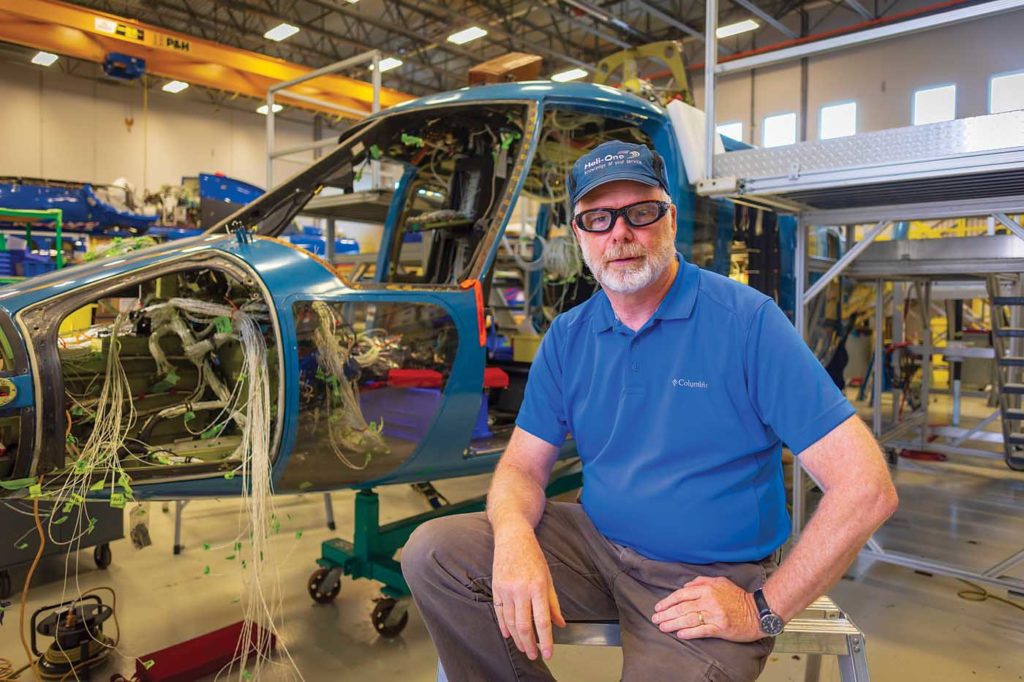
In Canada, Heli-One’s activities are spread across two facilities: Richmond and Delta, British Columbia. The former is a relatively new facility, having opened in 2017, and about 200 staff work across the two.
Heli-One Canada focuses primarily on supporting the Sikorsky S-92 and S-76, with the CHC S-92 fleet providing a large amount of activity.
“We are also in the middle of expanding capability on Leonardo’s AW139,” said Lane.
Additionally, the Canadian facility is the new home of Heli-One’s AS350/H125 support capability, following the closure of its facility in Fort Collins, Colorado. It will provide major component and airframe MRO for the type. As Vertical went to press, Heli-One expected its AS350 capability to be live by the end of June 2019.
“There’s tons of [AS]350 aircraft in the U.S. and Canada, so we’re expecting there will be a big demand for service,” said Lane.

Finally, the Polish facility has a staff of about 100, and focuses largely on airframe work. “Lately they’ve been focusing on 139s, and there’s been a fair bit of business in the 139 area,” said Lane.
The facility is set to become the new home for the company’s Bell 212 and 412 work, which was previously completed in Canada. “That’s a really competitive and fragmented market,” said Lane. “We’re in the process of transferring that equipment to Poland because we think that we can be more competitive there at servicing those aircraft.”
Engineering a solution
Heli-One’s engineering and design department, which focuses on mechanical and avionics customizations, is split between its facilities in Canada and Norway. The departments have gained official approval as design organizations from their respective regulatory agencies (Transport Canada and the European Aviation Safety Agency), and have developed an enviable reputation for their work across an enormous variety of modification projects.

The company’s modification expertise spans the spectrum of operating sectors, from oil-and-gas to search-and-rescue, air medical, military, governmental, VIP, and utility. “There’s not really a use or an application for a helicopter that we haven’t got solutions for,” said Forsyth.
Over the years, Heli-One has developed a catalogue of hundreds of STCs and modifications. “[The catalogue] is a strong base for our engineers to look at a customer’s problems and think about what we’ve got on the shelf that can meet their needs,” said Forsyth. “But they listen to the customer and are able to develop new modifications if they need to.”
Alan Stewart is the senior design manager at Heli-One’s facility in Richmond. The department has a staff of about 10, while Stavanger’s design department has about 20 people. Major projects will see the teams swell through the use of contractors, when needed.
“We have a search-and-rescue machine that is in our hangar right now that the customer wants turned into to a utility machine — he’s going to do heavy lift with it,” said Stewart. “When you get an aircraft repurposed like that, it usually adds up to anywhere between 10 and 25 individual modifications and maybe half a dozen removals as well.”
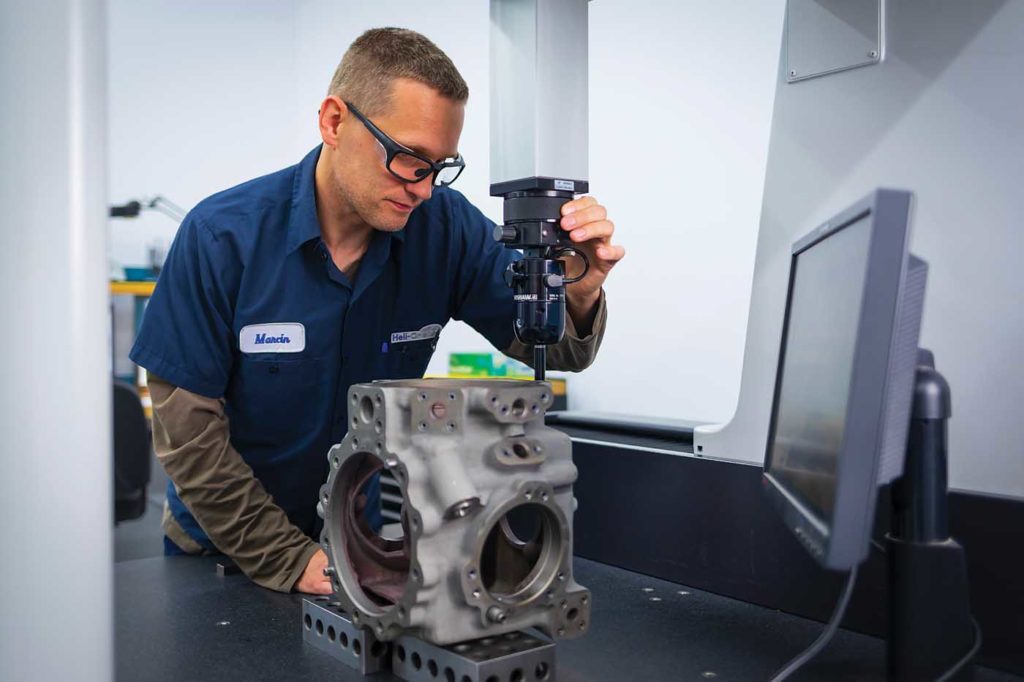
Each modification begins at the design stage, in which the team finds the piece of equipment that will work best with the customer’s operational and functional needs, and figures out how to install it.
According to Stewart, some modifications are very popular and frequently requested, while others are entirely unique.
“We have a traffic system on the S-76, for example, that we’ve probably used on 40 different aircraft,” he said. “But another example might be infrared cameras, where no two customers want the same camera. They just have a favorite and they want us to do it differently every time.”
Among the recent major projects completed in Richmond was a VVIP cabin and avionics upgrade on an S-76B.

The cabin upgrades included all-leather seats that were custom-shaped and feature custom gold embroidery; carbon fiber furnishings with a polished dark finish, offsetting gold-plated hardware; multi-spectral LED lighting controlled via touchscreen displays; audio/visual entertainment on demand via a 15-inch display; inter-cabin conferencing with Bose noise-cancelling headsets; and external cameras.
In the cockpit, three Universal Avionics EFI-890H advanced flight displays were added, along with a Universal Avionics UNS-1Lw flight management system with Vision-1 synthetic vision system.
“It’s the first really high quality luxury interior we’ve ever done,” said Stewart. “We learned an awful lot on this job.”
The customer, a private operator in Malaysia, was so pleased with the aircraft that Heli-One is now completing an identical modification on a second S-76 for them.

Advertisement
The low cost of used aircraft right now is driving a lot of modification work, said Stewart.
“There are 76s that are in flyable condition selling for ridiculously low prices,” he said. “The same thing with Super Pumas and 225s. People are buying them and finding work for them, and that all drives a little or a big mod program on every change of ownership.”
In terms of general trends in modifications, interconnectivity is driving a lot of work, said Stewart. “We’re seeing people that want to do satellite communications or broadband or video streaming from satellites,” he said.
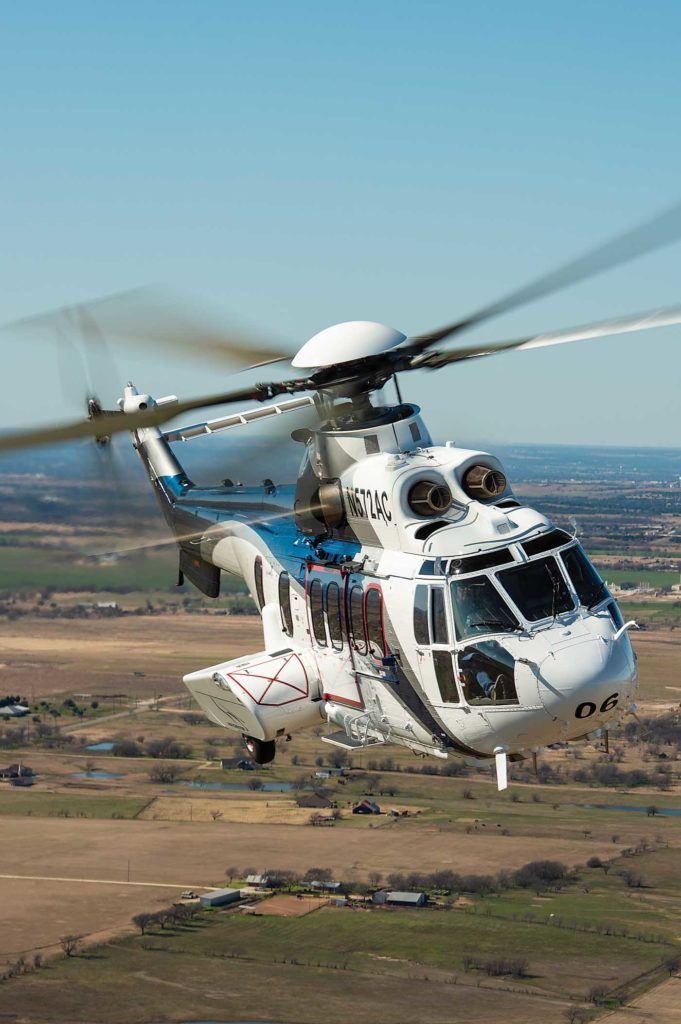
Strength through variety
The sheer variety of work offered by Heli-One is one of its key strengths, said Lane.
“Customers like to just have one place to go [for MRO support] if they can,” he said. “For example, somebody that would need to work with Airbus for the airframe, with Safran for the engines, with Honeywell for the avionics — they can come to us and we can do all three. We may not do all work on all three, but then we’ll subcontract or get what we need to service the full agreement by subcontracting.”
Heli-One’s support continues to evolve to meet customer demand for reduced turnaround times and convenient service, through flexible MRO support packages, mobile repair teams who can travel to customers to perform work, and continued investment in cutting-edge tooling, such as a new plasma spray capability that can rebuild a part that otherwise would need replacing.

The company has also applied lessons learned from the Chapter 11 process, merging its supply chain with CHC’s to enhance its planning, use of inventory, and its ability to negotiate with suppliers.
“That’s a big aspect of MRO and something that we’ve put a lot of focus on recently in our sales and operations planning with the supply chain — to have the right parts at the right time,” said Forsyth.
While the H225 modification work is providing a boost to Heli-One’s business now and into the immediate future, the company is planning new directions to further secure its position and provide ballast against the fluctuating fortunes of the offshore industry. A key element of this is military and government work.
The support contracts with the U.K. MoD and Royal Netherlands Air Force are examples of the type of business upon which Heli-One is keen to build. In May 2019, the company announced another large government contract win: an upgrade contract with the German Federal Ministry of the Interior to modify its new fleet of four Airbus H215s, with an option for an additional 16 AS332 L1s/H215s. The aircraft, which will be operated by the German Federal Police, will be used for public safety services, and will also take part in international missions. Each aircraft will require more than 50 modifications to tailor them to their role, including cabin installations, communication/navigation equipment, searchlights, cameras, and rescue equipment, and the project could take up to eight years to complete.
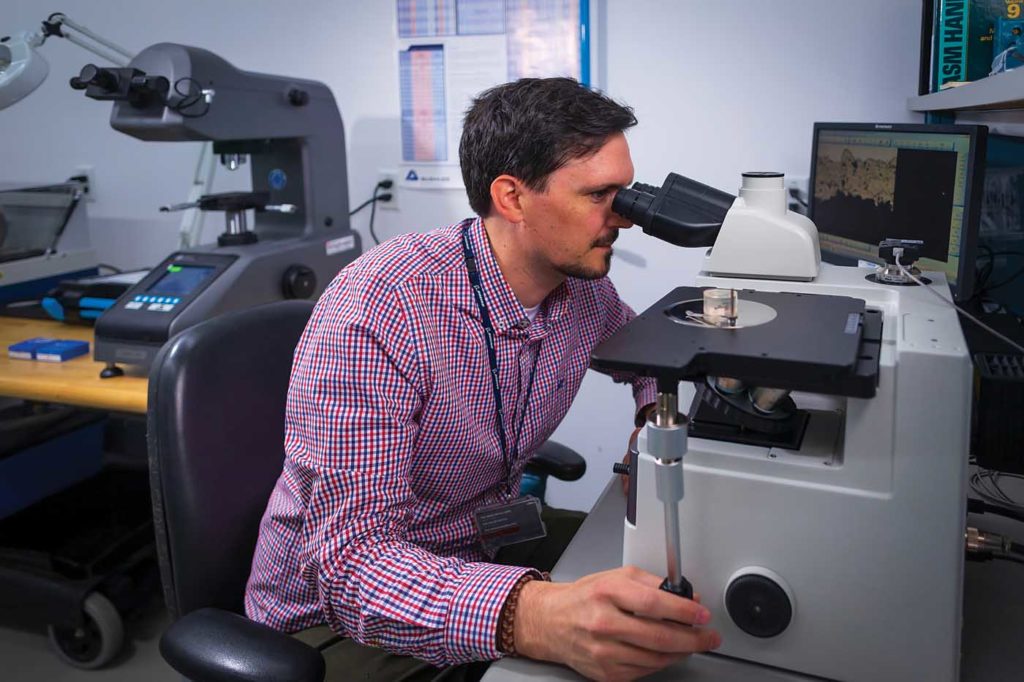
Future targets include Canadian military upgrade and support programs for the Bell CH-146 Griffon, Sikorsky CH-148 Cyclone, and Leonardo CH-149 Cormorant, said Lane, with Heli-One Canada recently hosting Harjit Sajjan, the country’s defense minister, for a tour of its facility.
“What we can do to benefit the military is we can bring commercial aspects to the military operation,” said Lane. “In return, we get that stable piece of work which then allows us to flex up and down when the commercial market goes up and down.”
In terms of expanding its geographical presence, Heli-One is considering various options, said Lane. The company recently appointed a new sales and business development team member in Brazil, but Lane said establishing a facility in South America isn’t necessarily a planned next step.
“Everything is on the table,” he said. “We are looking at expanding; we just want to make sure that it fits in with the overall strategy. So it could be China; it could be Brazil. But these things take a while, and nothing’s imminent.”
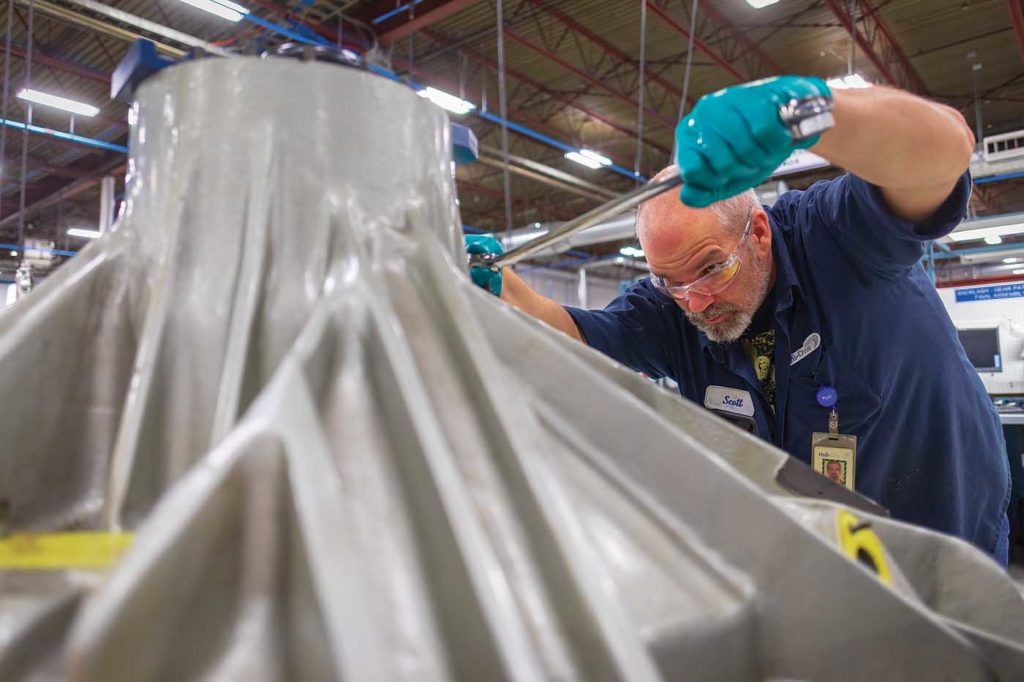
Despite the continuing challenges in the offshore sector, Heli-One’s ability to adapt and evolve to the new opportunities presented by the new reality have allowed it to not only endure, but thrive. With a broadened focus going forward, it appears well set for future growth.


